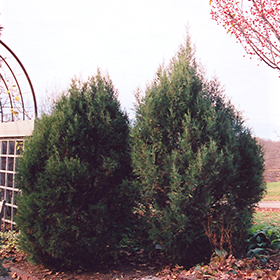Description
Growth & Care
| USDA Plant Hardiness Zone | 2a |
| Growth Rate | Slow |
| Recommended Pruning Method | Only Prune New Growth |
Foliage
| Foliage Type | Evergreen |
| Plant Form | Pyramidal |
Flowers
| Flower Fragrance | Unscented |
Additional Categories
| Additional Category | Spruce |
| Landscape Application | Accent, Garden |
Details
Planting & Growing
Fat Albert Blue Spruce will grow to be about 15 feet tall at maturity, with a spread of 10 feet. It has a low canopy, and is suitable for planting under power lines. It grows at a slow rate, and under ideal conditions can be expected to live for 80 years or more.
This tree should only be grown in full sunlight. It is very adaptable to both dry and moist growing conditions, but will not tolerate any standing water. It is considered to be drought-tolerant, and thus makes an ideal choice for xeriscaping or the moisture-conserving landscape. It is not particular as to soil type or pH, and is able to handle environmental salt. It is highly tolerant of urban pollution and will even thrive in inner city environments. This is a selection of a native North American species.
Landscape Attributes
Fat Albert Blue Spruce is a dense evergreen tree with a strong central leader and a distinctive and refined pyramidal form. Its average texture blends into the landscape, but can be balanced by one or two finer or coarser trees or shrubs for an effective composition.
This is a relatively low maintenance tree. When pruning is necessary, it is recommended to only trim back the new growth of the current season, other than to remove any dieback. Deer don't particularly care for this plant and will usually leave it alone in favor of tastier treats. It has no significant negative characteristics.
Fat Albert Blue Spruce is recommended for the following landscape applications:
Accent, General Garden Use
Ornamental Features
Fat Albert Blue Spruce is primarily valued in the landscape for its distinctively pyramidal habit of growth. It has attractive blue evergreen foliage which emerges silvery blue in spring. The needles are highly ornamental and remain blue throughout the winter. The rough gray bark adds an interesting dimension to the landscape.




